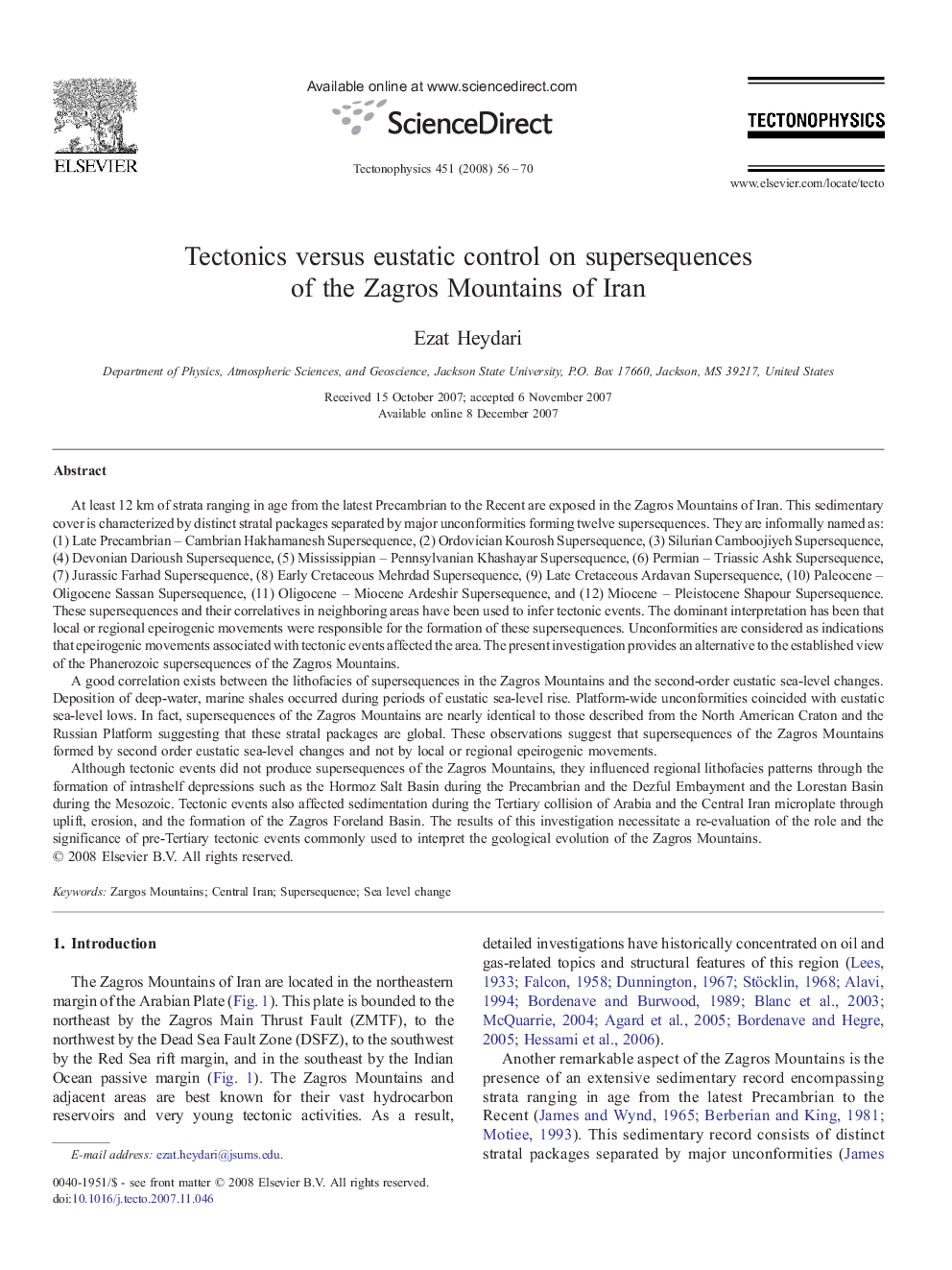| کد مقاله | کد نشریه | سال انتشار | مقاله انگلیسی | نسخه تمام متن |
|---|---|---|---|---|
| 4694565 | 1636916 | 2008 | 15 صفحه PDF | دانلود رایگان |

At least 12 km of strata ranging in age from the latest Precambrian to the Recent are exposed in the Zagros Mountains of Iran. This sedimentary cover is characterized by distinct stratal packages separated by major unconformities forming twelve supersequences. They are informally named as: (1) Late Precambrian – Cambrian Hakhamanesh Supersequence, (2) Ordovician Kourosh Supersequence, (3) Silurian Camboojiyeh Supersequence, (4) Devonian Darioush Supersequence, (5) Mississippian – Pennsylvanian Khashayar Supersequence, (6) Permian – Triassic Ashk Supersequence, (7) Jurassic Farhad Supersequence, (8) Early Cretaceous Mehrdad Supersequence, (9) Late Cretaceous Ardavan Supersequence, (10) Paleocene – Oligocene Sassan Supersequence, (11) Oligocene – Miocene Ardeshir Supersequence, and (12) Miocene – Pleistocene Shapour Supersequence. These supersequences and their correlatives in neighboring areas have been used to infer tectonic events. The dominant interpretation has been that local or regional epeirogenic movements were responsible for the formation of these supersequences. Unconformities are considered as indications that epeirogenic movements associated with tectonic events affected the area. The present investigation provides an alternative to the established view of the Phanerozoic supersequences of the Zagros Mountains.A good correlation exists between the lithofacies of supersequences in the Zagros Mountains and the second-order eustatic sea-level changes. Deposition of deep-water, marine shales occurred during periods of eustatic sea-level rise. Platform-wide unconformities coincided with eustatic sea-level lows. In fact, supersequences of the Zagros Mountains are nearly identical to those described from the North American Craton and the Russian Platform suggesting that these stratal packages are global. These observations suggest that supersequences of the Zagros Mountains formed by second order eustatic sea-level changes and not by local or regional epeirogenic movements.Although tectonic events did not produce supersequences of the Zagros Mountains, they influenced regional lithofacies patterns through the formation of intrashelf depressions such as the Hormoz Salt Basin during the Precambrian and the Dezful Embayment and the Lorestan Basin during the Mesozoic. Tectonic events also affected sedimentation during the Tertiary collision of Arabia and the Central Iran microplate through uplift, erosion, and the formation of the Zagros Foreland Basin. The results of this investigation necessitate a re-evaluation of the role and the significance of pre-Tertiary tectonic events commonly used to interpret the geological evolution of the Zagros Mountains.
Journal: Tectonophysics - Volume 451, Issues 1–4, 28 April 2008, Pages 56–70